Scientific name Orthoptera Higher classification Panorthoptera | ||
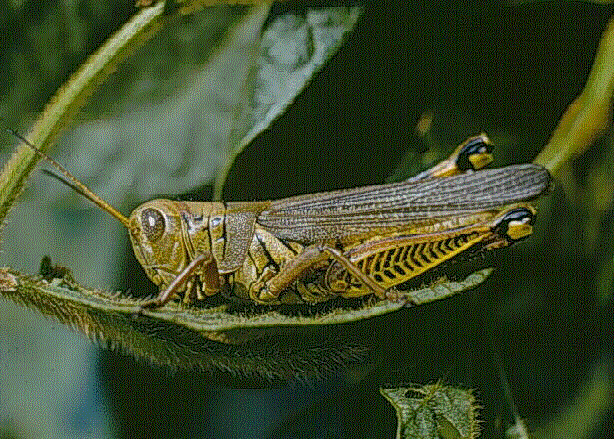 | ||
Lower classifications | ||
The Orthoptera order of insects includes the grasshoppers, crickets, cave crickets, Jerusalem crickets, katydids, weta, lubber, Acrida, and locusts.
Contents
- Grasshoppers are insects of the order orthoptera suborder caelifera
- Etymology
- Characteristics
- Life cycle
- Phylogenetics
- Relationships with Humans
- Classification
- References
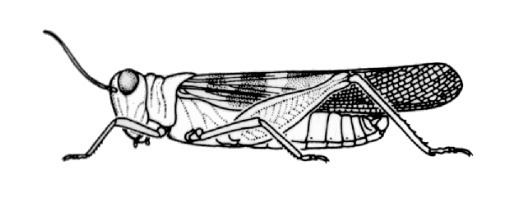
More than 27,000 species are distributed worldwide. Many insects in this order have paurometabolous or incomplete metamorphosis, and produce sound (known as a "stridulation") by rubbing their wings against each other or their legs, the wings or legs containing rows of corrugated bumps. The tympanum or ear is located in the front tibia in crickets, mole crickets, and katydids, and on the first abdominal segment in the grasshoppers and locusts. These organisms use vibrations to locate other individuals.
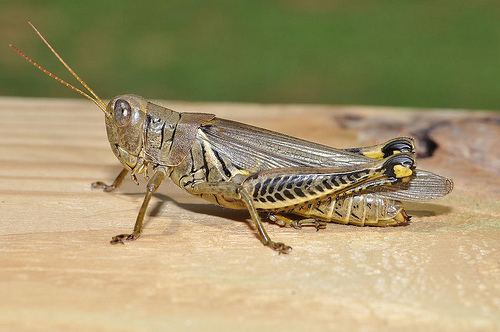
Grasshoppers are able to fold their wings, placing them in the group Neoptera.
Grasshoppers are insects of the order orthoptera suborder caelifera
Etymology
The name is derived from the Greek ortho meaning 'straight' and ptera meaning 'winged'.
Characteristics
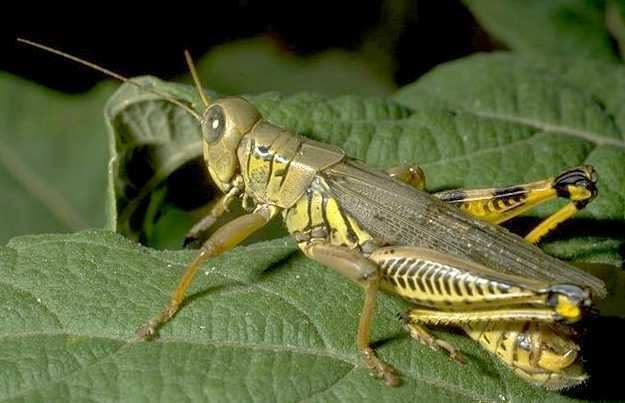
Orthopterans have a generally cylindrical body, with hindlegs elongated for jumping. They have mandibulate mouthparts for biting and chewing and large compound eyes, and may or may not have ocelli, depending on the species. The antennae have multiple joints and filiform type, and are of variable length.
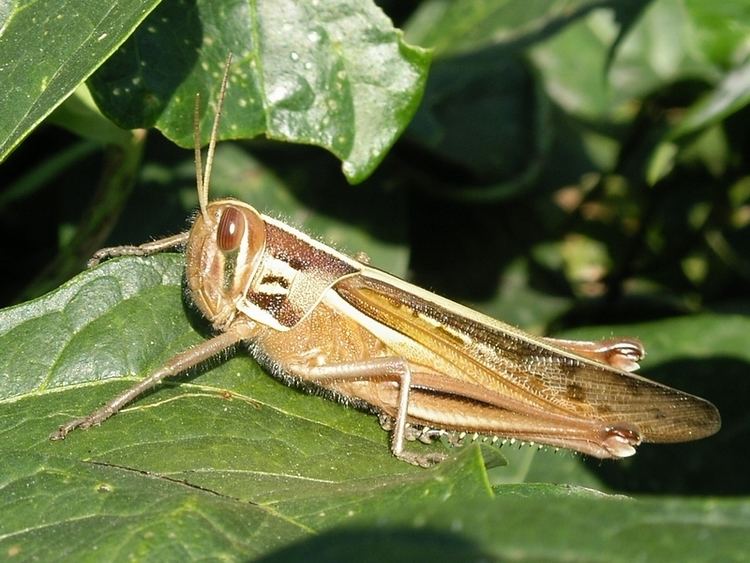
The first and third segments on the thorax are larger, while the second segment is much smaller. They have two pairs of wings, which are held overlapping the abdomen at rest. The forewings, or tegmina, are narrower than the hindwings and hardened at the base, while the hindwing is membranous, with straight veins and numerous cross-veins. At rest, the hindwings are held folded fan-like under the forewings. The final two to three segments of the abdomen are reduced, and have single-segmented cerci. and their wing type is tegmina.
Life cycle
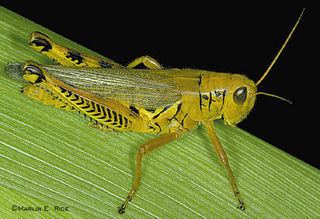
Orthopteroid species have a paurometabolous lifecycle or incomplete metamorphosis. The use of sound is generally crucial in courtship, and most species have distinct songs. Most grasshoppers lay their eggs in the ground or on vegetation. The eggs hatch and the young nymphs resemble adults, but lack wings and at this stage are often called 'hoppers'. They may often also have a radically different coloration from the adults. Through successive moults, the nymphs develop wings until their final moult into a mature adult with fully developed wings.

The number of moults varies between species; growth is also very variable and may take a few weeks to some months depending on food availability and weather conditions.
Phylogenetics
The branching order of these animals is fairly well understood. The suborders Caelifera and Ensifera appear to be monophyletic and the Rhaphidophoridae are a sister group of the Tettigoniidae. The Pyrgomorphidae are the most basal group of Caelifera. The Myrmecophilidae appear to form a clade with the Gryllotalpidae instead of with the Gryllidae. Additional work may be needed to confirm this.
Among the four subfamilies of Tettigoniidae, the relationships are (Phaneropterinae + (Conocephalinae + (Bradyporinae + Tettigoniinae))); among six acridid subfamilies the relationships are (Oedipodinae + (Acridinae + (Gomphocerinae + (Oxyinae + (Calliptaminae + Cyrtacanthacridinae))))).
Relationships with Humans
Classification
Two suborders and 235 subfamilies are in this order.
